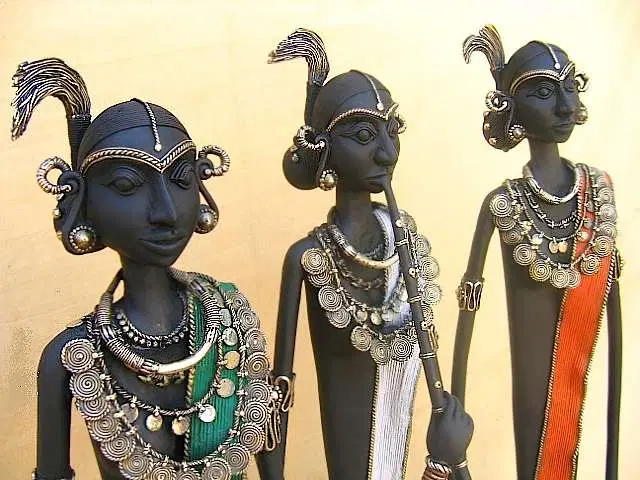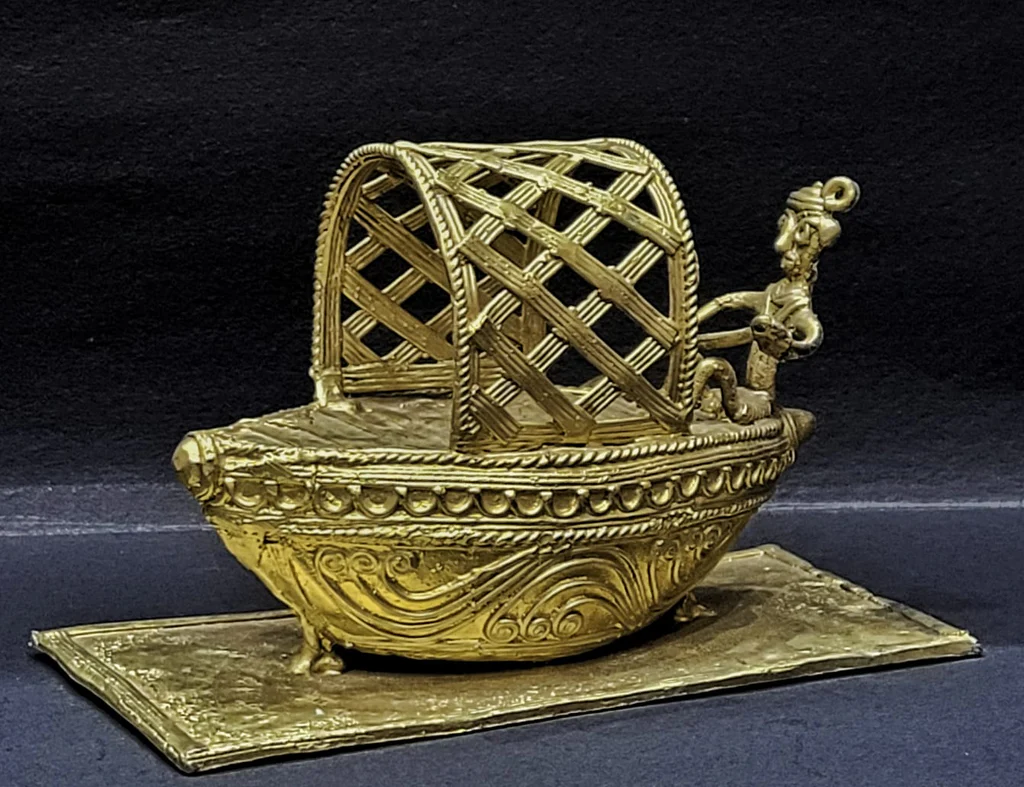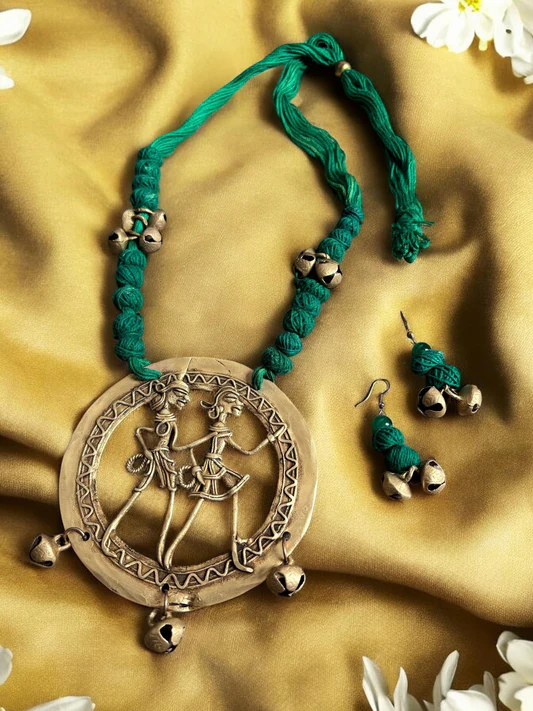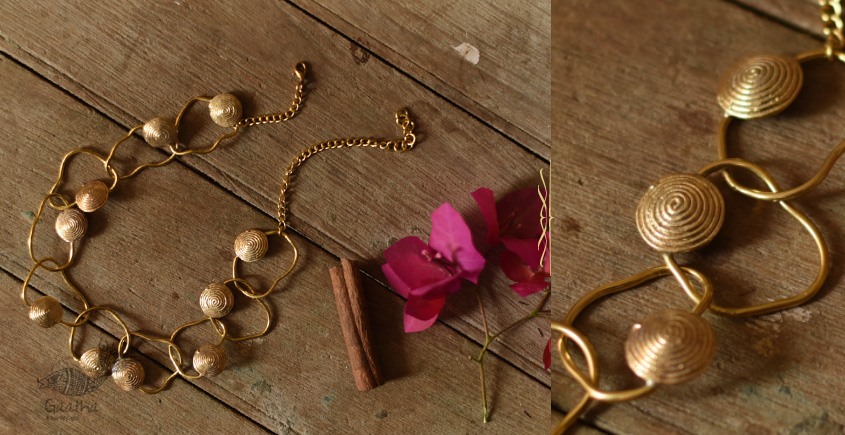-
Dokra Art: An Ancient Craft of Timeless Beauty: An Ancient Craft of Timeless Beauty
Origins and Historical Background
-
Dokra, also known as Dhokra, is an age-old metal casting tradition that uses the lost-wax casting technique. Historically, this method dates back over four millennia and is believed to have originated during the Indus Valley Civilization.Dokra Art: A Historic Tradition of Enduring Elegance Moreover, the term “Dokra” is derived from the Dhokra Damar tribes—skilled metalworkers native to West Bengal, Odisha, Jharkhand, and Chhattisgarh. Their craftsmanship has been handed down through generations, thereby preserving the art’s ancient roots and cultural identity.Dokra Art: An Ancient Craft of Timeless Beauty
Dokra Art: An Age-Old Technique of Lasting Grace is a fitting description of this enduring heritage.
Materials and Crafting Method
Dokra artisans primarily work with brass, a blend of copper and zinc. Initially, the process starts with shaping a model from beeswax or a similar wax. Then, this wax figure is layered with clay, forming a mold around it.
Afterward, the mold is baked, causing the wax inside to melt and flow out, leaving a cavity. Subsequently, molten brass is poured into this hollow mold. Once cooled, the clay covering is broken to reveal the finished piece.
Since each item is crafted entirely by hand, no two pieces are ever exactly the same, making every work of art unique and special. Therefore, each artifact carries the distinct mark of its creator.
Visual and Cultural Appeal
Dokra artworks are admired for their earthy appeal, traditional motifs, and detailed craftsmanship. Designs often feature elements from nature, tribal life, and mythological stories. As a result, every artifact becomes a blend of aesthetic charm and cultural storytelling, reflecting centuries-old traditions and values.
-

Dokra Art Sculpture is a captivating form of tribal metalcraft that merges age-old tradition with artistic storytelling. Crafted using the lost-wax casting method, these sculptures are not just decorative objects—they are expressions of culture, mythology, and everyday life.
Dokra Art Sculpture: Description(Dokra Art: A Historic Tradition of Enduring Elegance
Crafting Process:
- Made from brass or bronze, using the lost-wax technique, an ancient method over 4,000 years old.
- Artisans first shape a model in beeswax, cover it in clay, and then heat it so the wax melts and drains out, allowing molten metal to fill the mold.
- Once cooled and broken open, the mold reveals a unique, handcrafted sculpture.

Design & Style:
- Known for its tribal motifs, folk themes, and mythological figures.
- Often depicts animals, deities, tribal people, musicians, and everyday village scenes.
- Artworks are usually unpolished, giving them a raw, earthy finish that highlights their organic beauty.
Cultural Significance:
- Dokra art pieces are often used in rituals, festivals, and as decorative items in homes.
- It represents the rich tribal heritage and craftsmanship of rural India.
- Today, Dokra is also celebrated in modern decor, blending tradition with contemporary aesthetics.

Dokra Art Jewelry is a stunning blend of tribal tradition and timeless elegance. Handcrafted by skilled artisans using the ancient lost-wax casting technique, each piece of Dokra jewelry tells a story rooted in India’s rich cultural heritage.
Dokra Art Jewelry: Description
Material & Technique:
- Made primarily from brass using the lost-wax method.
- Each piece is individually handcrafted, ensuring no two pieces are ever exactly the same.
- The process gives the jewelry a raw, rustic finish with intricate detailing.
Design Aesthetics:
- Inspired by tribal life, nature, folklore, and mythology.
- Common motifs include elephants, peacocks, sun, fish, human figures, and tribal masks.
- Jewelry pieces are often geometric or abstract, with a bold and earthy look.
Types of Jewelry:
- Necklaces – Statement pieces with large pendants and symbolic motifs.
- Earrings – Often dangle-style, crafted with delicate tribal patterns.
- Bangles & Bracelets – Solid, detailed, and typically worn in stacks.
- Rings & Anklets – Intricately designed and often chunky.
Cultural & Modern Appeal:
- Worn traditionally during festivals, folk dances, and rituals in tribal communities.
- Today, embraced in bohemian, fusion, and contemporary fashion for its unique charm.
- A symbol of sustainable fashion, as it’s handmade and eco-friendly.
The Enduring Beauty of the Ancient Tradition of Dokra Art
Overview:
The ancient art of metal casting known as Dokra or Dhokra has been practiced for over 4,000 years. It is believed to have originated during the Indus Valley Civilization, and over time, it has been preserved and passed down by the Dhokra Damar tribes of West Bengal, Odisha, Jharkhand, and Chhattisgarh. Even today, this art form continues to reflect India’s tribal heritage and artistic legacy.
The Art of Creation: Combining Tradition and Technology
Dokra art is primarily crafted from brass, an alloy of copper and zinc. Initially, a model is shaped using beeswax, after which several layers of fine clay are applied with precision. Once dried, the mold is fired, causing the wax to melt and drain out. Consequently, a cavity is formed, into which molten brass is poured.
After cooling, the clay mold is carefully broken, revealing a unique, handcrafted sculpture. Since each piece is entirely made by hand, no two are ever identical. Thus, every artifact carries the distinct signature of its creator, making it truly one of a kind.
Design and Style: A Cultural Aesthetic
Dokra sculptures are known for their tribal motifs, mythological figures, and natural elements. Common subjects include deities, animals, musicians, and daily rural life. Moreover, the sculptures are typically left unpolished, which gives them a raw, earthy texture. As a result, they possess an organic appeal that enhances both their visual impact and cultural authenticity.
Cultural Importance: The Role of Art in Maintaining Identity
Traditionally, Dokra pieces were used in rituals, religious ceremonies, and as decorative household objects. However, as global interest in folk art has grown, these items are now celebrated worldwide for their timeless beauty and cultural depth. Despite being rooted in tribal customs, Dokra art has been successfully adapted to suit modern tastes in fashion and interior design.
Dokra Jewelry: Where Elegance and Expression Collide
In addition to sculptures, Dokra artisans craft exquisite jewelry. Using the same lost-wax casting technique, each piece is individually handcrafted, ensuring complete uniqueness. Therefore, no two necklaces, earrings, or bangles are ever the same.
Popular motifs—such as elephants, peacocks, the sun, and tribal masks—draw inspiration from nature and folklore. Originally worn during tribal festivals and rituals, these bold, rustic designs have now found a place in contemporary fashion. Consequently, Dokra jewelry is recognized not only as a cultural symbol, but also as an example of eco-friendly, artisanal fashion.
In Summary
Though ancient, Dokra art remains vibrant and relevant. While its techniques are deeply rooted in history, its ability to adapt has allowed it to endure through the ages. Today, whether displayed in museums and homes or worn as statement jewelry, Dokra continues to embody the spirit and elegance of India’s tribal heritage.
